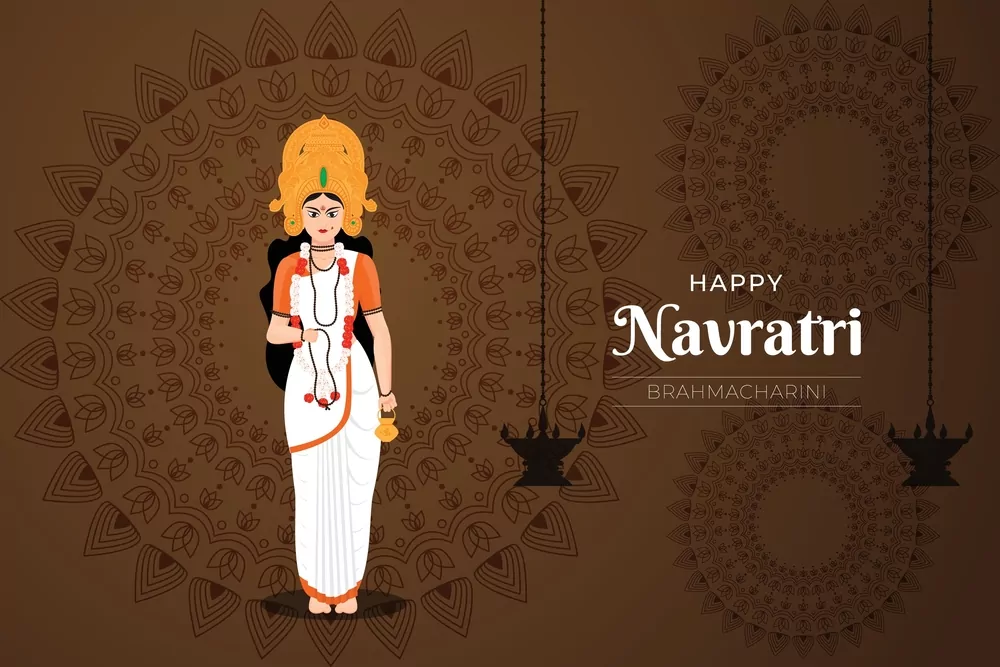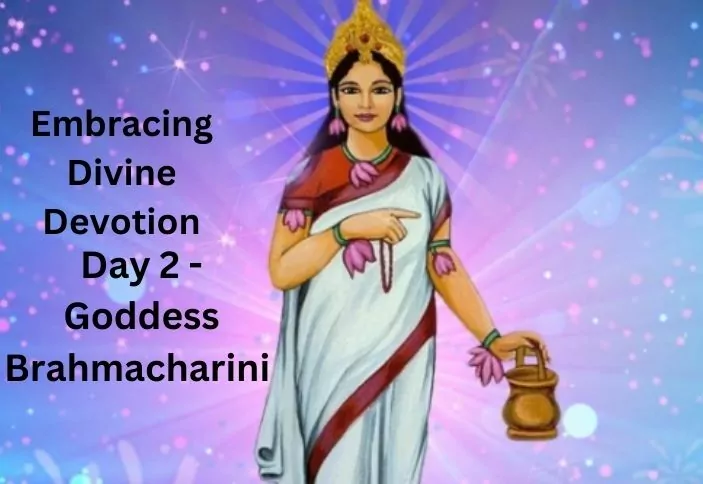As the vibrant festival of Navratri continues, we embark on the second day, dedicating our devotion to another captivating form of Goddess Durga. We worship Goddess Brahmacharini Day-2, an embodiment of unwavering devotion and penance. Let’s delve into the significance of this divine avatar and the rituals that accompany it.
Goddess Brahmacharini – The Mother of Devotion
Goddess Brahmacharini represents the supreme mother of devotion and penance. Her name, “Brahmacharini,” is derived from two words: “Brahma,” which means penance, and “charini,” which means a female follower. She is the epitome of dedication and self-discipline, a testament to the power of unwavering devotion.
The Iconography of Goddess Brahmacharini
Goddess Brahmacharini is often depicted with a serene countenance and adorned in white attire, symbolizing purity and simplicity. In her right hand, she holds a chanting rosary (rudraksha mala), which represents meditation and spirituality. In her left hand, she carries a Kamandalu, a water pot, signifying her unwavering commitment to a life of austerity and self-restraint.
The Significance of the Second Day of Navratri
The second day of Navratri is dedicated to Goddess Brahmacharini and holds deep spiritual significance. It is believed that worshipping her on this day grants blessings for unwavering devotion, self-discipline, and spiritual growth. Devotees offer foods made of sugar to symbolize the sweetness that devotion brings into one’s life. This act is a homage to her ascetic lifestyle and the strength she gained from her deep meditation and penance.

The Chanting of the Rosary
Goddess Brahmacharini’s rudraksha mala represents the power of meditation and spiritual awakening. It serves as a reminder that devotion is not merely a physical act but an inner journey of the soul. By meditating and chanting, one can transcend the material world and connect with the divine, much like she did during her prolonged penance to win Lord Shiva’s heart.
The Kamandalu – Symbol of Austerity
The Kamandalu in her left hand symbolizes an essential aspect of her character—her unwavering commitment to a life of austerity and self-restraint. It teaches us the value of moderation and the profound strength that comes from self-discipline. By following in her footsteps, devotees aim to cultivate a balanced and harmonious life.
The Spiritual Message
The worship of Goddess Brahmacharini reminds us of the transformative power of devotion and self-discipline. It is a call to embrace simplicity, humility, and the pursuit of higher knowledge. Her pure white attire signifies the path of purity and the clarity that comes with unwavering faith.
As we pay homage to Goddess Brahmacharini, we seek her blessings not only for spiritual growth but also for strength in facing life’s challenges. Her unwavering devotion teaches us that with dedication and self-discipline, we can overcome any obstacle on the path to spiritual awakening.
As we celebrate the second day of Navratri and pay homage to Goddess Brahmacharini Day-2, the Mother of Devotion, we are reminded of the profound sweetness that devotion can bring into our lives. With offerings of sugar-based foods, we embrace the symbolism of her unwavering faith and self-discipline. Her rosary and Kamandalu serve as powerful symbols, inspiring us to embark on a journey of spiritual growth and purity. By following her example, we can tap into the transformative power of devotion, leading lives of simplicity and strength. Let this day be a reminder to us all that, in our pursuit of spiritual growth, devotion can be our guiding light, leading us to a life filled with love and grace. And as you prepare to immerse yourself in the joy of Dandiya and Garba events this Navratri, consider using the Geniefie trip planner app to create custom itineraries, ensuring your celebration is as memorable as it is spiritually uplifting.

